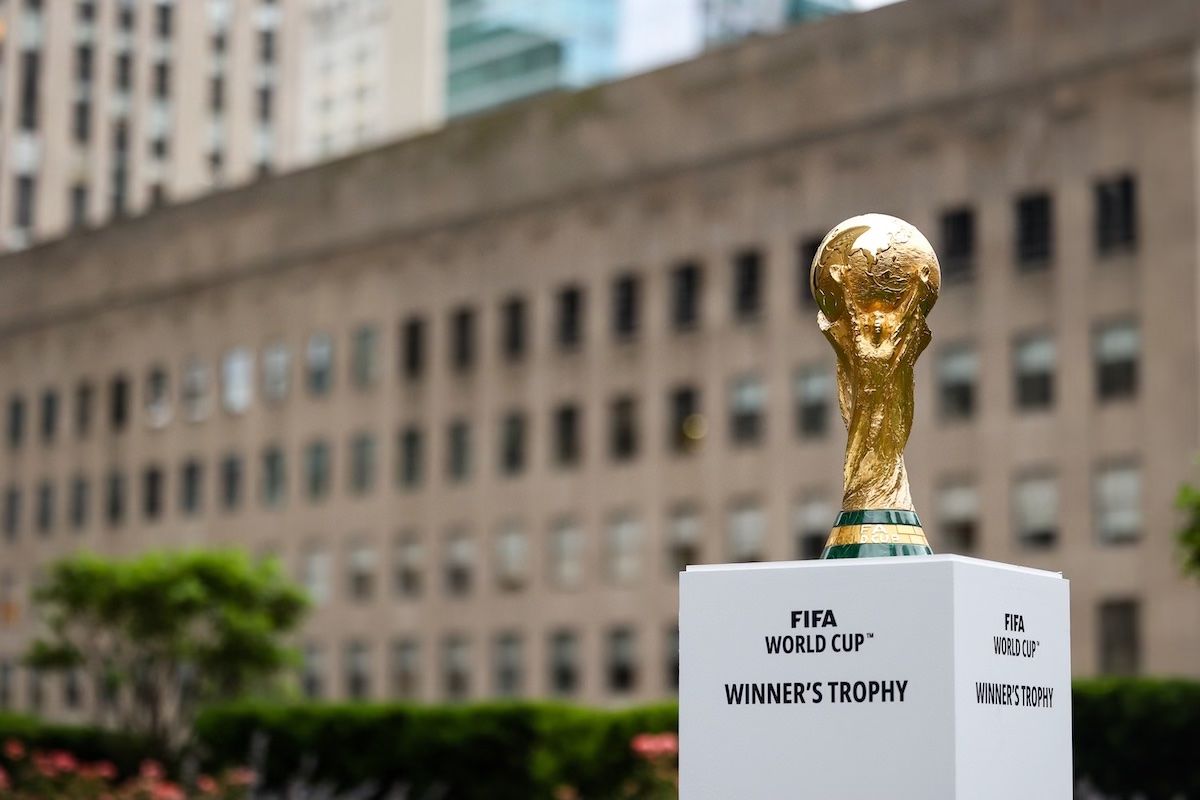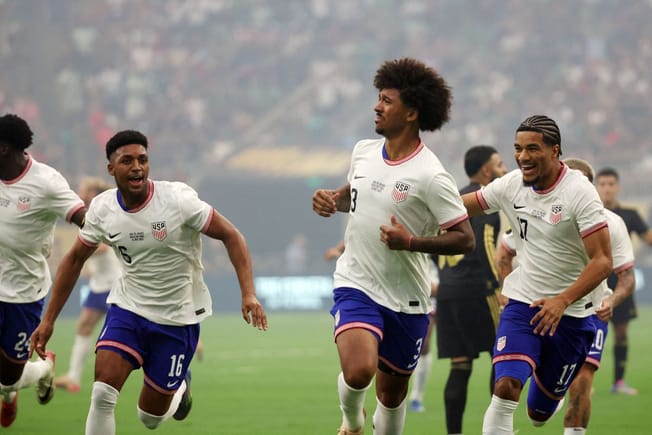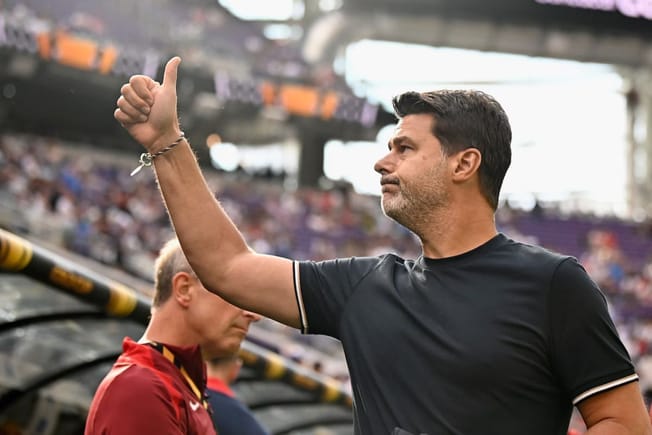Quick Hits
- Every team wants to make a run in the World Cup. But how do you actually go out and win soccer’s biggest international tournament?
- After looking at the data, here’s what the numbers say about how to win the Men’s World Cup
Whether it’s United States trying to make some noise, England aiming to make the most of a golden generation, or *fill in the blank country here* attempting to accomplish *fill in the blank goal here*, everyone wants to make their mark at the World Cup. While the sport is basically the same at both the international and the club levels, some things seem to work differently on the world’s stage.
Specific international teams – and specific types of international teams – tend to have more success at big tournaments like the World Cup than others.
So let’s take a look at what makes a winner, shall we? Here’s our guide to winning the Men’s World Cup.
GOALS WIN GAMES, BUT DEFENSE WINS CHAMPIONSHIPS
The 2018 World Cup was a weird one. Didier Deschamps’ mostly defensive “suffer ball” was at least partially abandoned in favor of 4-2 and 4-3 results along France’s path to another World Cup title. But high-scoring World Cup winners are far from the norm.
Traditionally, finishing in the top five for goals conceded per game among the 32 participants is a huge boon to your nation’s World Cup chances. Seven of the last 10 World Cup finalists have featured an elite defense, while only four of the last 10 have been in the top five at the tournament in goals scored.

This isn’t entirely unexpected. We see that with new coaches at almost any level, it’s quicker to get your team up to speed on your defensive identity than it is to get them ready in any other phase. You really don’t have the time to coach more complex attacking systems over sporadic 10-day national team camps.
The lesson? A good defense can go a long way at the World Cup.
HOW VALUABLE IS A STRIKER, ANYWAYS?
We often think of strikers as the players who win big international games.
It’s easy enough to conjure an image of Robert Lewandowski dragging Poland to a knockout win or Cristiano Ronaldo carrying Portugal to a result. But do strikers really matter as much as we think they do? In the last 40 years, the only Golden Boot winner to lead his nation to glory is the OG Ronaldo, El Fenomeno, in 2002 with eight goals. Before that, it was Paolo Rossi and Italy back in 1982. So maybe strikers aren’t the most important part of the team.
But there just might be a key position if we look back towards the goal.
The Golden Glove (formerly known as the Lev Yashin) award, which is given to the best goalkeeper at the World Cup, has only existed since the 1994 tournament. But aside from Belgium’s Michel Preud’homme, every single goalkeeper to win the award has either made the final or won the third place game.
Now, this trend might be a case of the chicken and the egg. Did these goalkeepers win the award because they went far in the tournament or did they go far in the tournament because they were deserving of winning such an award? Still, Fabien Barthez, Gianluigi Buffon, Iker Casillas, and Manuel Neuer were tournament winners in ‘98, ‘06, ‘10, and ‘14, respectively, while Oliver Kahn and Thibaut Courtois finished second and third in ‘02 and ‘18.
Goalkeepers win you games folks!
From American Soccer Analysis’ Goals Added model, presented without comment.

YELLOWS, REDS, AND THE POWER OF REFEREES
With the introduction of VAR, we’ve seen a few significant changes to the international game.
The 2018 World Cup had the fewest cards of any international tournament ever – that shift towards leniency is probably a good thing for you and your World Cup hopes. No winner since 2006 has been shown a red card and only six of the 19 winners in Men’s World Cup history ever received a red card.
Save for a stretch from 1990 to 2002 where winners Germany, Brazil (x2), and France all suffered red cards, they are exceedingly rare. If you want to boost your chances of winning a trophy, you have to keep your players on the field.
SET PIECES, SET PIECES, SET PIECES
Want to know a crazy stat? Okay, here we go. According to FIFA, through the 64 matches at the 2018 World Cup, teams scored 71 goals from set pieces. SEVENTY-ONE. Don’t worry, it gets even better.
Of the 32 teams at the tournament, 15 of them scored over half of their goals from set pieces. Five of the 11 quarterfinal goals came from set pieces, two of the four semifinal goals did the same, and three of the seven final goals stemmed from them, too. England’s nine set piece goals at the 2018 World Cup is the most for one team in any World Cup. Ever. One in every 31 corners resulted in a goal in Russia in 2018, compared to one in every 36 in Brazil 2014, and one in every 61 in South Africa 2010.
Set pieces, set pieces, set pieces...
— FOX Soccer (@FOXSoccer) July 7, 2018
Harry Maguire heads home the opening goal of the match to put England up 1-0! pic.twitter.com/uGph264mnY
There are whole teams who build themselves around solid defending, decent transitions, and being good on set pieces. Take 2018 winners France.
In the Round of 16, they scored a penalty (which was won off a transition attack), two open-play goals, and then another in transition. In the quarterfinals, they scored a header off a free kick and then a goal from a goalkeeper error. In the semifinals, they scored a header off a corner to win 1-0. Then, in the final, they scored an own goal off a free kick and conceded from a corner before scoring a penalty won from a corner.
Set pieces are the golden goose of international play and everyone is just now starting to realize it. If you want your country to go deep, nailing set pieces is pretty much a requirement.
PENALTY SHOOTOUTS
The dreaded penalty shootout. It may seem like a lottery, but there is some data to think about here.
According to Apesteguia and Palacios-Huerta, considering some 270 shootouts across the major continental tournaments, the World Cup, and major club tournaments, shooting first in the shootout results in a win 60.5% of the time. That’s a significant result! Conversely, Ricardo Manuel Santos’ workfrom this summer shows the team that shoots first wins just 52.3% of the time in his sample of 600 men’s shootouts. That is, uh, not a statistically significant result.
How do we reconcile these two results (and the other numerous studies) that flip back and forth? I have no idea.
I do know, though, that much like me, players have a preference. Apesteguia and Palacios-Huerta asked players, if you win the toss, where do you want your team to shoot? A whopping 96% said their preference is to shoot first. When asked why, the overwhelming majority answered with some variation of “to put the pressure on”.
Here are some other penalty factors to consider: shooters are 25% more likely to shoot across their body, compared to opening up to their dominant side. That is, right footed shooters like to aim to their left and left footed shooters like to aim to their right. Veterans tend to score at higher rates than young players (77.13% for 33-year-olds, 74.55% for 18-year-olds, according to InStat).
From further InStat research – and this is clearly the most important bit – Capricorn’s are the most likely to miss, while Leo’s are the most trustworthy penalty takers. Maybe don’t let Jesus Ferreira take a penalty for the U.S. in Qatar.








Comments